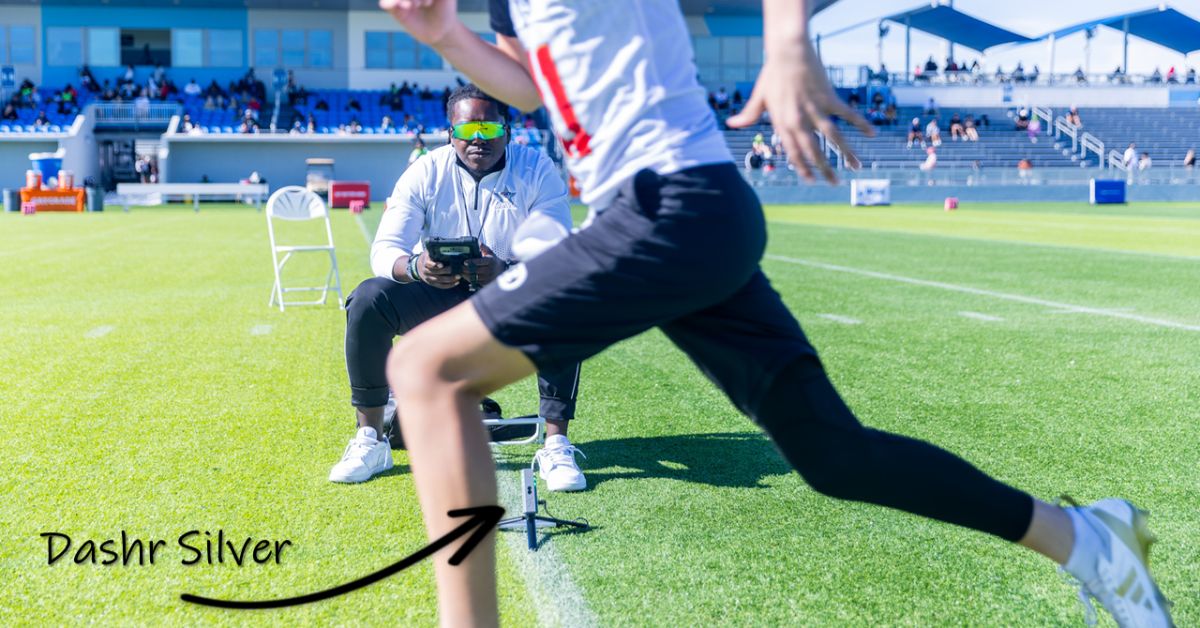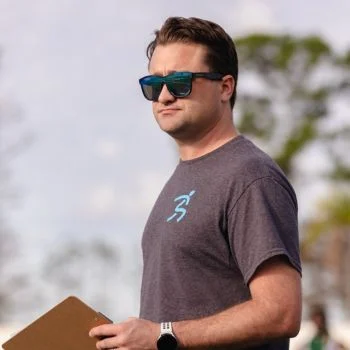“If you don’t innovate, you die.” Both coaching and technology are constantly evolving and follow this mantra from Disney CEO Bob Iger to a Tee. When the playing field and the resources change, you adapt to make the winning move.
When it comes to electronic timing, coaches care most about a system’s:
- Accuracy
- Reliability
- Ease of use
If you have those three qualities and make the tech affordable, the industry now has a valuable tool that can be used at all levels of athletics. It was through these needs that Dashr was born.
In 2015, I was in my doctoral studies within the Nebraska Athletic Performance Lab when the University of Nebraska was looking to purchase a $30,000 timing system. Being the one engineer in the room, I stood up in the meeting and told them I could make what they needed for under $2k. By March, Nebraska had what they needed.
At that time, Nebraska tested every varsity athlete at least once per year. It did not matter if you played football or women’s rifle: we tested your 10 yd sprint, 5-10-5, and vertical. We also tested athletes in the walk-on programs, and it was there that I saw athletes not making the cut because they simply didn’t know how to test. A kid that could move great but didn’t know how to do a proper 3-point start or footwork for the 5-10-5 would lose out to another kid that had the proper coaching, but was obviously a lesser athlete.
I had a conversation with Boyd Epley (assistant AD at Nebraska at the time) about this, and he told me that athletes at the high school level do not have access to this kind of tech, so the parents that can send their kids to trainers/coaches outside the high school had a massive advantage. That is when he told me about his company Epic Athletic, and his goal to provide affordable tech to high schools. Based off his lengthy experience in the industry and the constant testing that I was a part of, I assembled a team to make a commercially available timing product geared toward high schools.
After two years of use, refinement, and validation with the University of Nebraska, we released our first Dashr timing product (2.0) in 2017. Over the years, continuous improvement to the mobile app and hardware has created an easy-to-use laser timing system, which offers athlete data management that enables programs of every size to take advantage of electronic measurement.
Innovation is essential when it improves an existing solution or creates a solution where one was not yet available. In laser timing, we were an innovator back in 2017 by becoming the first system controlled exclusively by a mobile app. This allowed for a more adaptive, more intuitive user interface while greatly reducing the cost of production. Now that we have been in the industry for nearly a decade, it is time for another game changer.
When it comes to electronic timing, coaches care most about accuracy, reliability, and ease of use. If you have those 3 qualities and make the tech affordable, the industry now has a valuable tool to use at all levels of athletics. Share on XReflecterless Laser Timing
Most technology comes with its own challenges—to find space for innovation, we started by looking at the main challenges faced by coaches with laser timing technology. We have found that their main challenges include:
- Range – How far can the timing gates can be from each other or the control module? Utilizing wireless technology or lengths of cables, this may be 40 yards, 60 yards, or up to several 100 yards.
- Sunlight – Does external light impact the timing system? With a laser to reflector system, light is bouncing around and direct sunlight can make it difficult for the sensor to detect the laser.
- Set-up and footprint – How long does it take to set-up the system, and how much space does it take up? Extending multiple tripods and aiming lasers at reflectors takes up time and space.
- Portability – Are you able to pack up the system for travel and safe storage?
- Data Management – How easily can you save, track, analyze, and distribute testing data?
- Continuity of support – How does a coach stretch their funds to best help their athletes? The needs of a coach’s program is constantly evolving, but budgets are limited.
What you get by addressing all these challenges come together with the Dashr Silver timing system.
Dashr Silver timing gates do not use a reflector. Reflectorless means that where previously you would need to set up two tripods, you now only need one. Reflectorless means that you no longer need to line up lasers and reflectors and worry about them becoming misaligned. Reflectorless means that set up is simply placing a laser on the ground and turning it on.
Video1. Dashr Silver in use at the 2024 FBU Futures Camp
Now let’s dig into how we are attacking these key challenges coaches face with electronic timing.
1. Range
A big part of making the Dashr system innovative and affordable required being able to operate the system with a mobile app on the coach’s phone or tablet. We all have a computer in our pocket, why spend another $1,000+ plus on a custom control module? The challenge with using the coach’s device is that there is no control over the capabilities of that device.
Two otherwise identical devices might have different apps, different cases, or one may just be a lemon…and, on top of that, what are the Bluetooth capabilities? How good is the WiFi/network connection? If the phone is placed on the ground, what happens to wireless connections? These are all things that can easily be solved through a quick call or email to go over best practices, but it can be hard to get operators to completely read instructions or get on a call in the middle of a testing event.
With Dashr Silver, all the lasers connect to each other—so there will be no more reliance on the coach’s phone or tablet outside of a simple connection to the starting laser. Just keep your phone near the starting gate and let the system roll! If you are doing a linear sprint or laps around a track, we recommend you keep each laser within 75 yards of the preceding one, and you can connect up to 10 lasers at once—so, with 10 gates you could go as far as 675 yards!
With @DashrMPS Silver, all the lasers connect to each other—so there will be no more reliance on the coach’s phone or tablet outside of a simple connection to the starting laser. Share on X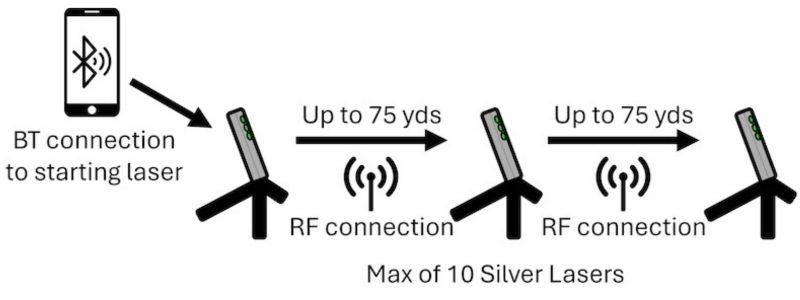
2. Sunlight
Any laser-to-reflector system needs to take the light from sunlight into consideration. Our Dashr Blue lasers greatly reduce the sun’s impact compared to our 2.0 laser, and following our “Outdoor Tips” will make sure the sun does not affect the system. The challenge here is that the user needs to follow these instructions when they have a thousand other things going on.
Thanks to our new technology, the sun has absolutely ZERO impact on the reflectorless Dashr Silver system! Orient the laser however you would like, indoors or outdoors.
Video 2. Using the Dashr Silver system from every angle in full sunlight.
3. Set up & Footprint
With the Dashr 2.0 lasers, we went through a dozen or more tripod manufacturers to find a lightweight, compact, and sturdy tripod without ever finding a great solution. With the development of Dashr Blue in 2021, we decided to design our own tripods. Being tech guys, designing a tripod was not the core of what we were working on—but taking the time to do this was a massive upgrade in the product that should have been addressed earlier. The user experience regarding the setup and teardown of the system—as well as the reasonable weight of the complete system—was central to making a system that could easily be used by a single coach at short notice.
This being said… Dashr Silver only requires mini tripods, so set up is incredibly fast as there is no need to extend legs, adjust heights, screw on components, or hit a reflector with a laser. The footprint of the system is also reduced from two tripods with a 12-22 inch radius down to a single, low-profile tripod with a 12 inch radius. With Dashr Silver on a track, you can run two sprints using three lanes compared to one sprint using three lanes when using traditional laser timing.
The @DashrMPS Silver only requires mini tripods, so set up is incredibly fast as there is no need to extend legs, adjust heights, screw on components, or hit a reflector with a laser. Share on XBecause of the need to aim the previous laser models, every tripod required a mobile head on it. When it came to the design of the Dashr Silver device, the simplest answer was to do what every other laser timing gate had done before it and simply provide a singular mounting point for an external aiming device. But when you step back from this feature, you will notice that there are only two distinct ways that this device needs to be aimed. It either needs to aim horizontally to capture a three point start or angled up to catch a torso running by. The simplest answer turned out to be the best, which was to simply provide two fixed mounting points:
- Use the one at the bottom for a hand start.
- Use the angled one for a through gate.
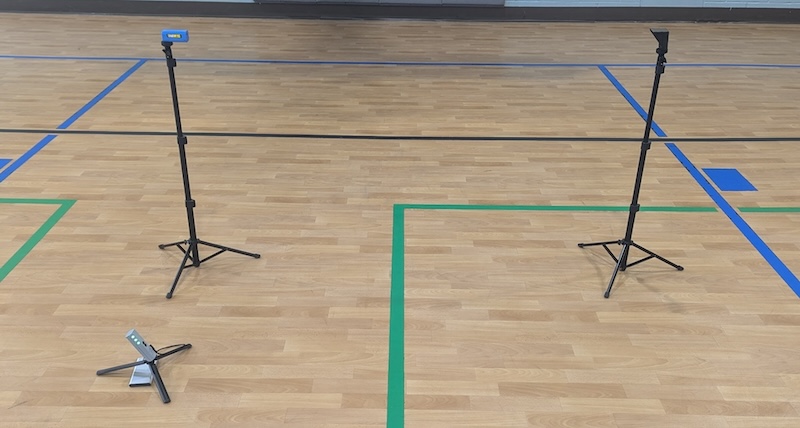
4. Portability
Dashr timing systems have always been designed to be portable, but when using laser-to-reflector systems, the sheer number of tripods required for larger events adds up quickly. An Under Armour combine with 1,000+ athletes uses three lanes of the 40yd dash with a split, along with three lanes of the pro-agility and L-drills. With the Dashr Blue system, this requires 24 taller tripods and 6 mini tripods, along with our recommended tripod and phone holder at each station. With the Dashr Silver, this is reduced to 15 mini tripods.
Additionally, the shift from AA batteries in the Dashr Blue system to the USB-cabled external battery opens up additional power opportunities, depending on where you do your testing. You might have your own USB power banks or choose to simply plug the gates into the wall in your facility during training.
Now it will be even easier to travel and deploy your timing system!

5. Data Management
Coaches got into coaching because they love their sport and want to see their athletes succeed. With all the demands on the time of their athletes, it is up to the coach to find the most efficient ways to use their limited time to help their athletes reach their potential. The Dashr Dashboard is a great tool for doing this. It automatically brings all your testing data together, preventing additional record-keeping steps and potential human errors. With that said, there is hesitation amongst coaches to give up the tradition of a clipboard and pencil. Decades of results were recorded on clipboards, why should it be abandoned now?
With all the demands on the time of their athletes, it is up to the coach to find the most efficient ways to use their limited time to help their athletes reach their potential. The @DashrMPS Dashboard is a great tool for doing this. Share on XNow is the time, because for no additional cost, the coach can allow athletes to self-sign up, provide biometric data, and retrieve their results all while reducing the time-requirements placed on the coach. The coach creates a Roster on their Dashr Dashboard and simply posts the unique Invite Code on their bulletin board (or email, text, etc.). The athlete downloads the Dashr Player Profile App for free and enters the code.
Now, the athlete is instantly added to the coach’s account and is a member of the new roster. Seconds after an athlete records a result on the field, their phone receives that result, providing the athlete with a full record of all their results at any time, without the coach having to lift a finger.
With the Dashr Player Profile App, athletes can track their progress, run reports, enter competitions, create trading cards, and even increase their chances of getting recruited.
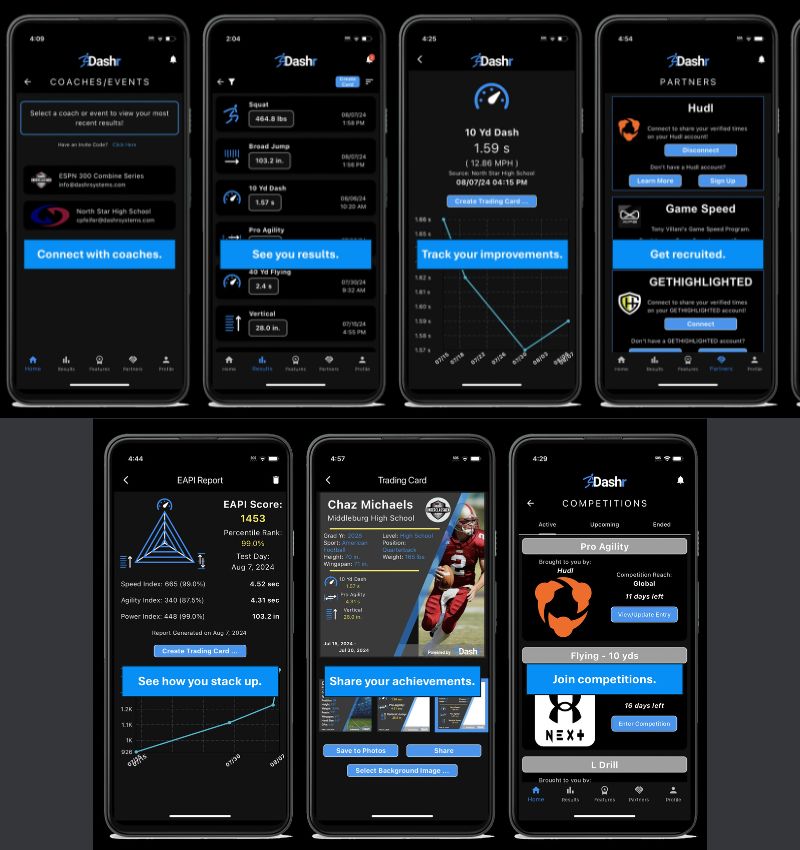
6. Continuity of Support
It is one thing to have access to technology and equipment, it is another to know how to properly use it and benefit from all the pertinent features. A main goal for us at Dashr has been to err on the side of having too much information available to our users. This makes for complicated web development and upkeep, but we have an operational walk through for every drill we offer through the app as well as details on each product we provide. In addition, we have a searchable list of articles that dive even deeper into the system. We have made the system incredibly user friendly, but we want our users to explore all the possibilities available.
In addition to online resources, we support online chat, email, and phone—as well as the ability to schedule video calls with our team. If you have a question, concern, or just want to learn more, please feel free to reach out!
From a financial perspective, we have worked to make all our technology as affordable as possible—but electronic timing is one piece of an ever-evolving ecosystem for a coach. That is why we will continue to develop new technologies and reimagine existing ones—like the jump mat—to offer as many solutions as possible under one platform. As it currently stands, timing, reaction testing, jumps, biometrics, simple AMS, reporting, and data distribution (Player Profile App) are available through Dashr and we have a long list of additional products and software updates in the works. Our goal is to be the singular solution for the coach who needs multiple products and software platforms.
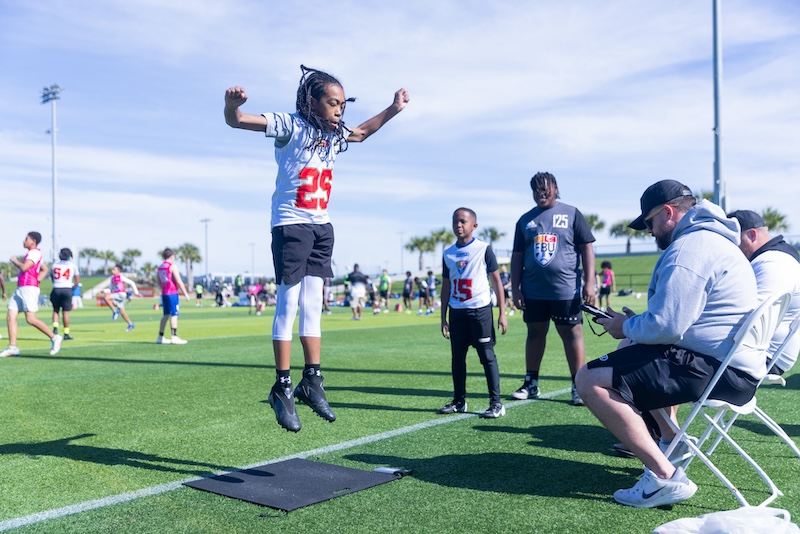
How to Operate Dashr Silver
Now that you know what advancements have been made, let’s get to operating the new Dashr Silver system!
Video 3. Silver in operation.
Operation is as simple as it gets.
- Register your Silver laser in the app.
- Select the drill you want to run.
- Connect the equipment.
- Test your athletes.
Detailed instructions for this can be found within our online resources for drill operation. Simply select a drill to check it out.
When you first open up the Silver system, you will notice that all of the lasers are attached to mini tripods and angled up. This orientation is used for static starts as well as splits/finish gates. As previously mentioned, there is another mounting location on the laser for a horizontal set-up.
When setting up a Silver laser, place it on the ground and plug it into an included USB battery. For static starting using the angled orientation, position the laser so that when the athlete is at the starting line the laser hits their waist (2.5-5 ft from the laser). Both you and the athlete will know this because the lights on the laser will turn red when someone is in the laser. For these starts, the clock will start when the athlete leaves the laser.
For your downfield gates (optional splits and the finish) you will use this same set-up. Make sure your laser is oriented along the line you want them to cross.
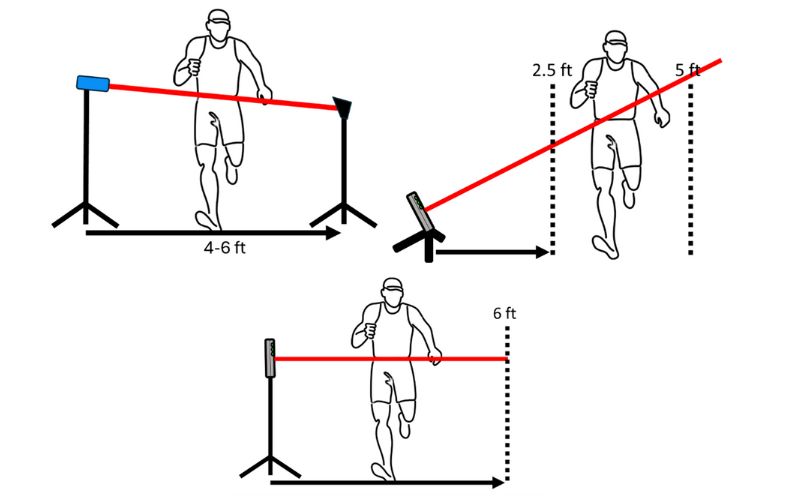
Note that in order to hit the torso of the athlete, they should be 2.5-5 feet away from the laser. Being too close may not trigger precisely on their start due to their leg swinging through (body detection technology), too far and they will be outside the 6 foot window. If you want to increase this window, you can attach the sliver laser to a taller tripod using the horizontal mounting thread on the bottom of the Dashr Silver laser.
For static starts in a 3-point stance, we recommend using the horizontal mounting thread on the bottom of the Silver laser. There is no visible laser (like with Blue), but the lights on the Silver laser will go red when the athlete’s hand is in the laser—so it is easy for them to know if they are in the laser or not. If you are timing off the back foot in a 2-point static start, it is much easier to move or angle the laser to hit the foot because you are not needing to hit a reflector.
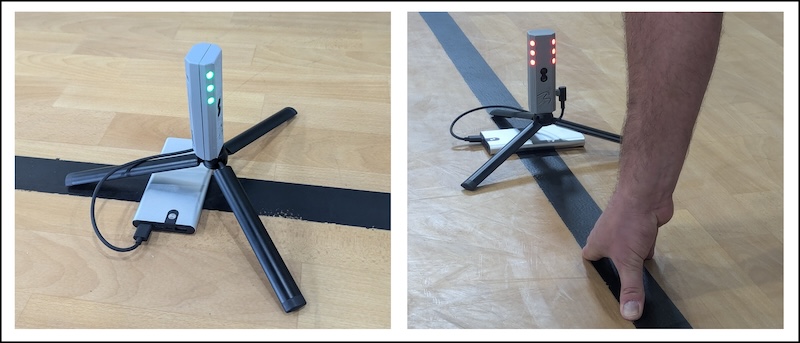
We recommend timing off the hand in a 3-point starts, or using the flying drill with the athlete positioned just behind the starting laser for 2-point starts. However you decide to time your athletes, make sure that you are consistent.
Video 4. 3-point vs 2-point starts.
There are sure to be additional advancements with reflectorless technology as new potential is realized. For one, the lights on the Silver lasers can be used for reactive drills. Currently, you can perform the reactive shuttle and the reactive agility drill using just Silver lasers, no Dashr React modules necessary. We anticipate adding in the ability to do reactive starts for dashes as well!
Conclusion
Adaptation and innovation will forever be a part of athletic training, and sometimes the best way to push training further faster is to pair it with technology that is as creative as you are as a coach.
Ultimately, coaching comes down to preparing your athletes with the right tools to set them up for success. We at Dashr are committed to bringing cutting edge technology to all athletes and finding ways to enable all athletes to reach their potential.

